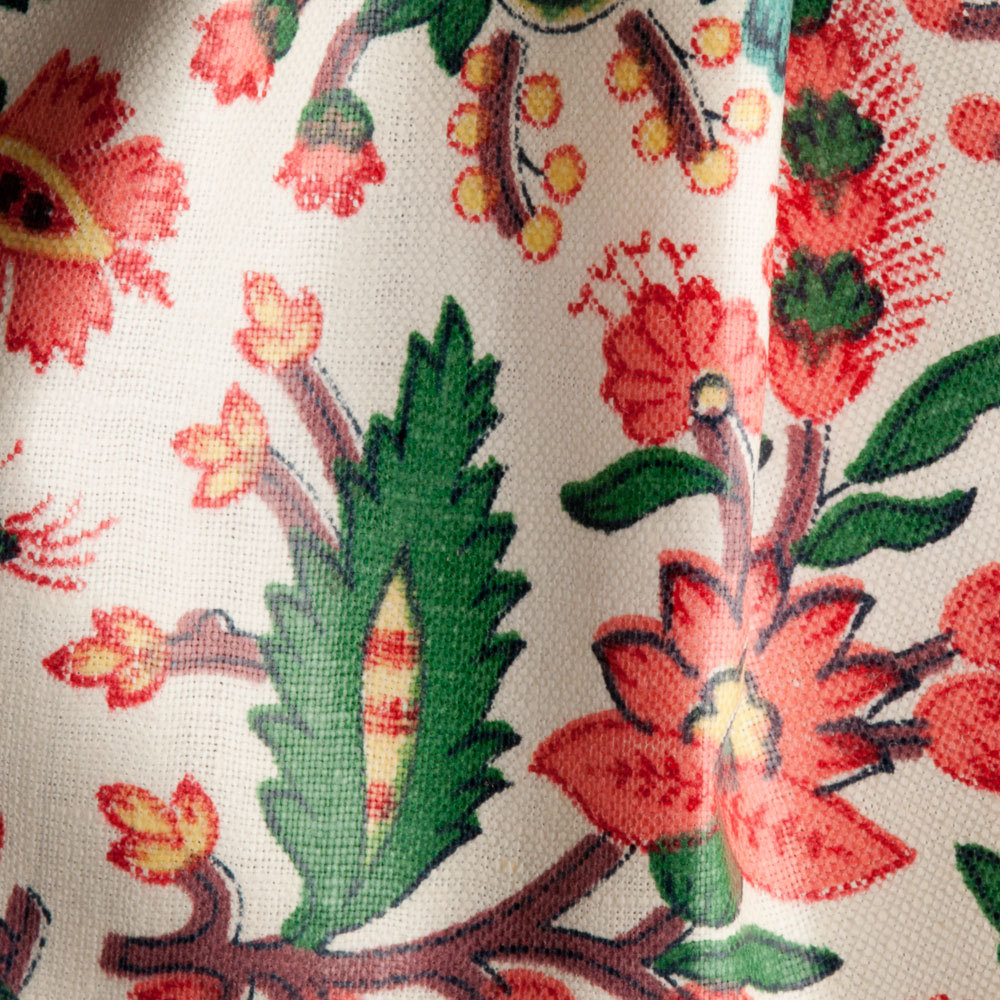The characteristic print of chintz is a large floral pattern, and the finish is glossy from glazing. It is of cotton or a cotton blend, in a plain weave. The glaze can be starch or wax (both temporary finishes), or a more durable chemical resin. Unprinted but glazed fabrics are sometimes called chintz today.
Chintz was originally made in India. The Indian name for the fabric was chint (plural chints), and the classic 17th century Indian chintz is a hand-painted Tree of Life pattern—brightly colored and featuring plants, animals and birds. The fabric was copied in Europe and America using block printing and starch glaze. The starch glaze would wash out, so it was used more practically for household decorating rather than clothing purposes. To this day, chintz is primarily associated with interior decorating.
Uses: Household decorations, some accessories and clothing
See also:
Polished cotton

